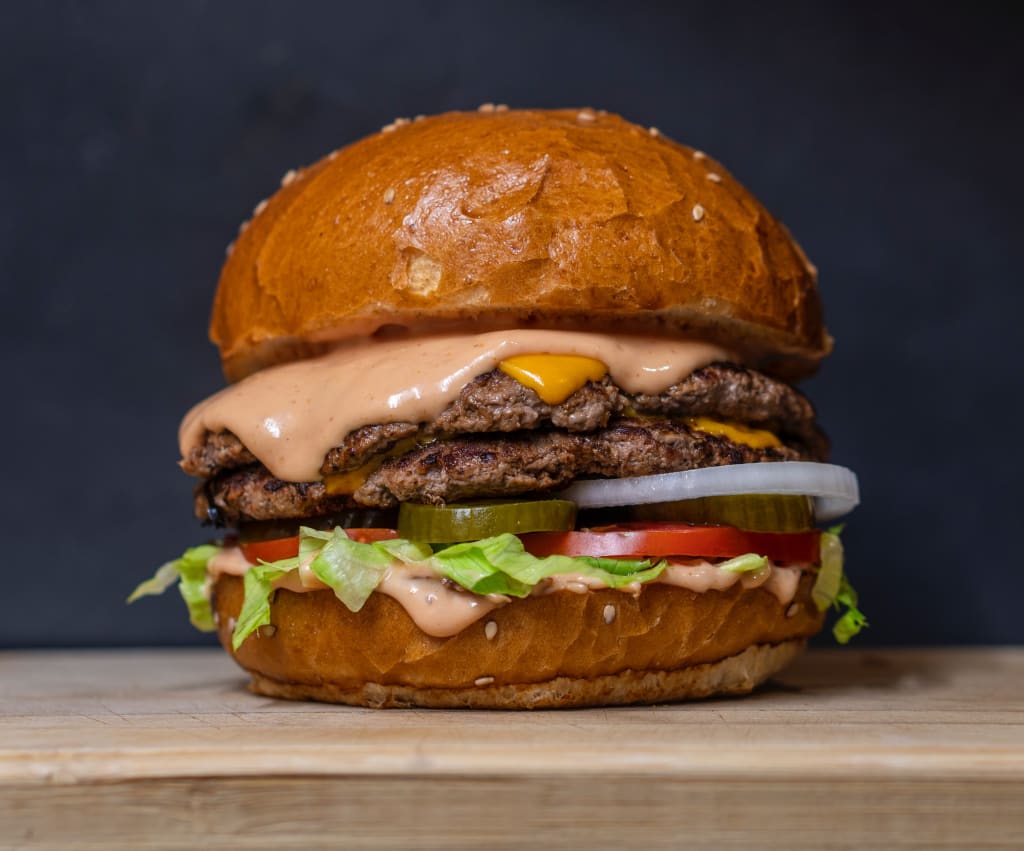"One fast-food burger can have meat from 100 different cows."
The fact that one single McDonald's patty can contain the meat of up to a shocking 100 cows.

A single McDonald's patty has the potential to include the meat from as many as 100 cows, which is quite astonishing.
The convenience, speed, and familiar taste of a fast-food burger make it incredibly appealing. However, the process of ordering one at your go-to fast-food restaurant is far from simple. It reveals a captivating and intricate reality: a single fast-food burger can consist of meat from up to 100 different cows. In this investigation, we will delve into the complex network of meat sourcing within the fast-food industry. By examining the reasons behind this phenomenon, we will uncover its implications for both consumers and the food supply chain.
The Journey from Pasture to Patty:
Traditionally, when we think of a hamburger, the image that comes to mind is a straightforward connection between a single cow and the meat on the bun. However, the reality in the fast-food industry is far more intricate. The meat in a typical fast-food burger often undergoes a journey involving multiple suppliers, processing plants, and even countries before it reaches the consumer.
- Meat Suppliers: Fast-food chains typically rely on large-scale meat suppliers to meet the demands of their extensive operations. These suppliers source meat from various sources, including ranches, feedlots, and processing facilities.
- Processing Plants: The meat from different sources is transported to processing plants, where it undergoes grinding and blending. This step is crucial for achieving the consistent texture and flavor associated with fast-food burgers.
- Blending and Mixing: In the pursuit of uniformity and standardization, meat from numerous cows is often blended. This process helps ensure that each burger patty maintains a consistent taste and texture, regardless of its origin.
- Distribution to Restaurants: Once the meat has been processed and blended, it is distributed to the various fast-food restaurant locations. Here, it is cooked and assembled into the familiar burger format that consumers recognize.
Reasons Behind Meat Blending:
The blending of meat in fast-food burgers is driven by several factors. One reason is the need for consistency in taste and texture. By combining meat from multiple cows, fast-food chains can ensure that each burger tastes the same, regardless of the individual variations in the quality and flavor of the meat. Additionally, blending meat allows for a more efficient use of resources. By utilizing meat from multiple cows, fast-food chains can minimize waste and maximize profits. Finally, the practice of meat blending also helps to meet the high demand for fast-food burgers. By sourcing meat from numerous cows, fast-food chains can ensure a steady supply of burgers to meet the needs of their customers. Overall, the reasons behind meat blending in the fast-food industry are driven by the desire for consistency, efficiency, and meeting consumer demand.
Consumer Impact:
- Consistent Flavor: By combining meat from different cows, fast-food chains can provide consumers with a consistent taste experience across all their locations. This uniformity plays a crucial role in attracting and retaining customers.
- Stringent Quality Control: To ensure the safety and quality of their burgers, fast-food chains have implemented strict quality control measures. While the blending process contributes to consistency, it also allows for better monitoring and control over the overall quality of the final product.
- Transparency Challenges: Blending meat from multiple cows presents challenges in terms of transparency. Consumers may not have a complete understanding of the various sources that contribute to the meat in their burgers, which raises concerns about traceability and ethical considerations.
- Environmental Impact: The global and large-scale nature of meat sourcing for fast-food chains can have significant environmental implications. This includes carbon emissions associated with transportation and the environmental impact of large-scale farming operations.
Conclusion:
The revelation that a single fast-food burger can contain meat from 100 different cows offers a glimpse into the complexity of the modern food supply chain. While this practice helps fast-food chains maintain consistency, control costs, and manage risks, it also raises questions about transparency, ethical sourcing, and the environmental impact of large-scale meat production.
As consumers become increasingly conscious of the origins of their food, the fast-food industry faces the challenge of balancing the need for efficiency and consistency with the growing demand for ethical and sustainable practices. The journey from pasture to patty is not only a reflection of the intricacies of the food supply chain but also an evolving narrative shaped by consumer values, preferences, and the quest for a more transparent and sustainable food future.





Comments (1)
Hello Fatima, AI is permitted on Vocal but it is a Vocal policy that content created with AI is mentioned at the start of the story/article. Your article/story has many telltales of AI-generated content. If you don’t correct this the content may be removed by Vocal and/or you may be banned from the Vocal.